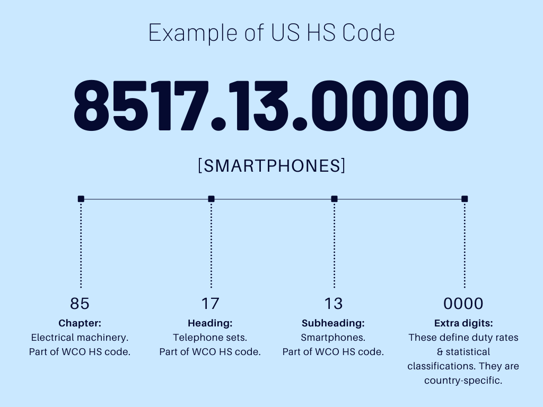In our era of globalization, goods and materials are crossing borders constantly. The Harmonized Commodity Description and Coding System – commonly known as the Harmonized System (HS) – is like a universal language that ensures everyone understands what products are being traded, no matter where they come from or where they're going.
When your products enter a new country, customs officials need to know what's inside the shipment, how much it's worth, and whether any rules or taxes apply to it. The HS code provides a standardized way to describe products, making customs clearance faster and more efficient.
HS code changes are made every five years by the World Customs Organization, but countries are free to introduce national distinctions for tariffs and other purposes at any time. So it’s wise to check your codes on a regular basis.
Keeping Up with HS Code Changes
The WCO’s HS code changes and updates are meant to simplify cross-border trade all over the world. They want to have the same rules for labeling products in every country. But here's the tricky part: even with these updates, different countries can still use slightly different codes for the same thing.
HS codes are six digits long, and they give you a general idea of what a product is. For example, a smartphone might have a six-digit code that says it's an electronic device.
Then, countries can add extra digits, making it a 10-digit code. These extra digits give trade officials more specific information, and they’re often where confusion can come in – especially when you compare the 10-digit codes between countries like the US and Europe. They might be talking about the same smartphone, but the extra four digits can make it seem like they're different things.
Or, say you’re shipping a sofa overseas. In the US, a standard sofa typically falls under HS code 9401.61.6011. But in the EU, it has a slightly different code: 9401.61.00.
This can cause problems when you want to send the sofa from the US to Europe, or the other way around. If you use the wrong one, it could mean delays with Customs and delivery.
An expert customs broker can help you understand these codes and advise the right one for your shipment.
HS vs. HTS Codes
 The Harmonized Tariff Schedule (HTS) is the 10-digit code system specific to the US. The first six digits are the same as the HS code, ensuring compatibility with the global system. The additional four digits provide more specificity and are tailored to U.S. trade requirements.
The Harmonized Tariff Schedule (HTS) is the 10-digit code system specific to the US. The first six digits are the same as the HS code, ensuring compatibility with the global system. The additional four digits provide more specificity and are tailored to U.S. trade requirements.
HTS codes are amended far more frequently than global HS codes. In fact, the US International Trade Commission has published 11 HTS revisions so far this year – with each revision containing dozens or hundreds of HS code changes.
How to Find the Right HS Code for US Imports
You are ultimately responsible for assigning the right code to any product you import. But unless you understand the coding system very well, it’s a good idea to work with a licensed customs broker who does.
When you arrange a shipment, you give your customs broker – or a freight forwarder that works closely with a broker – as much information as you can about the product. That includes the first six digits of the HS code. (Ideally, you’ll get that number from the company that supplies the product. Or you might try to figure it out yourself, using a tool such as the US government’s HTS search.)
You need to include this information on a document called the Importer Security Filing (ISF), which your broker transmits to US authorities before your product leaves the port of origin.
The customs broker might help you save on duties and import fees in several ways:
- Correctly adding the final four digits to the HS code. This ensures there’s no doubt about the product’s identity, and you pay no more than what you owe.
- Double-checking the code to avoid expensive surprises. If your educated guess about which code to apply turns out to be wrong, US Customs could hit you with a bill for more than you expected to pay. Customs might also point out regulatory obligations you didn’t know you had, with new fees attached. Besides triggering new costs, such a mistake could delay your shipment. When a customs broker takes charge, you owe the same duties and fees, but you’re prepared for the full cost in advance. And your shipment doesn’t get stalled in Customs due to incorrect paperwork.
- Keeping up with HS code changes. In the whirlwind of day-to-day business, it’s hard to stay on top of code changes, even though they may have significant financial consequences. For customs brokers, monitoring such changes is their job.
- Double-checking the code to avoid overpayment. Maybe you’ve chosen an incorrect HS code, and it calls for more in duties than the law requires you to pay. Will a customs agent catch that mistake and charge you the lower tariff rate? Who knows? But a good customs broker surely will, and then change the paperwork to reflect the true identity of your product.
Read more: Understanding Customs Brokerage Services
Trust the Trade Compliance Experts at I.C.E. Transport
The reference documents for HS codes are all free and readily available. But they don’t always provide the exact right answer. Sometimes it’s wise to work with a freight forwarder that provides customs brokerage as part of a single, integrated global transportation service. Contact the experts at I.C.E. Transport to start a discussion.




